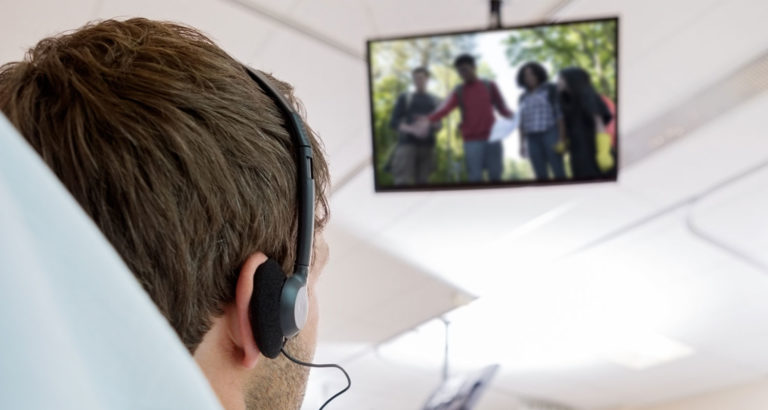Examples of Healthcare Designs That Put Patients Needs First with Smart AV Systems

We’ve been fanatical about patient-centric technology in healthcare settings for many years, and the industry is starting to embrace this mindset. There are countless instances of patient-centered design and human-centric designs for healthcare today, and they’re setting a high bar for the industry. Whether you’re designing a hospital, outpatient center, or other healthcare facilities, here are some examples of medical audio visual communications to inspire you.
NewYork-Presbyterian (NYP) Hospital Uses Smart Tech to Calm Patient Nerves
The David H. Koch Center at NYP Hospital delivers outpatient surgery, interventional radiology, diagnostic imaging, infusion services, and an Integrative Health and Wellbeing program. The space is as large as its offerings are extensive. For the 740,000-square-foot center to prevent patient and family from feeling overwhelmed, the hospital includes numerous technologies to direct them to where they need to go to improve their experience.
For example:
- Patients can skip a typical, lengthy check-in by filling out paperwork remotely and securely on the NYP mobile app or online prior to their visit.
- They have the choice to use a personalized smart band that grants access to the building and rooms they’ll need during their visit.
- Patients can even use the hospital’s app to get instructions about their visit and directions to other rooms.
- When a doctor says a patient can be discharged, they can then use the app to have their car pulled up from valet service, view test results, or schedule future appointments.
Telehealth Contributes to Value-Based Care
The idea of telemedicine has grown in popularity in recent years, and has begun gaining serious traction in hospitals as well. In fact, the American Hospital Association (AHA) states that “76 percent of U.S. hospitals connect with patients and consulting practitioners at a distance through the use of video and other technology.”
Whether used in smaller facilities or larger hospitals, telehealth technology gives patients, providers and family members more options for delivery of care. For example, a patient in a facility may choose to virtually connect their spouse during important doctor visits if they can’t be there in person. Or, a surgeon may follow up via video with a patient after they are released from the hospital. They’re no longer so restricted by physical proximity or scheduling conflicts.
Although the benefits to these parties are clear, there’s also an argument for telehealth in the world of new healthcare payment models. As the AHA shares, “Success in new payment models, such as bundling, accountable care organizations (ACOs) and new physician payment models, requires flexibility to deploy telehealth, particularly as part of care management programs.”
Virtual Nurses Make a Positive Impact
Telehealth is one thing, but virtual nurses are a different concept being rolled out in many healthcare design plans. They’re a fascinating part of patient centered design, and they’re getting positive reviews from on-location staff and patients alike.
As this article shares, “The introduction of virtual nurses has had a tremendous impact on hospital staff, mainly in terms of satisfaction and safety. The quality of care continues to go up and readmission is decreasing because of virtual nurses. If you talk to nurses in the hospital, they will all agree that they can’t leave patients at the bedside, but they also have added responsibilities. Virtual nurses help bedside nurses stay with patients.”
Furthermore, patients love that they can discuss their treatment plans at any time, rather than waiting for their doctor or nurse to be available. Virtual nurses can meet with patients at any time via a patient’s interactive TV or similar display in their room. This trend is upping the ante in human-centric designs for healthcare, and we’re glad to see it.
What patient centered designs around technology have you seen? Are you planning to include them in your next facility’s plans? We can help you decide the best route to take. Give us a call.
